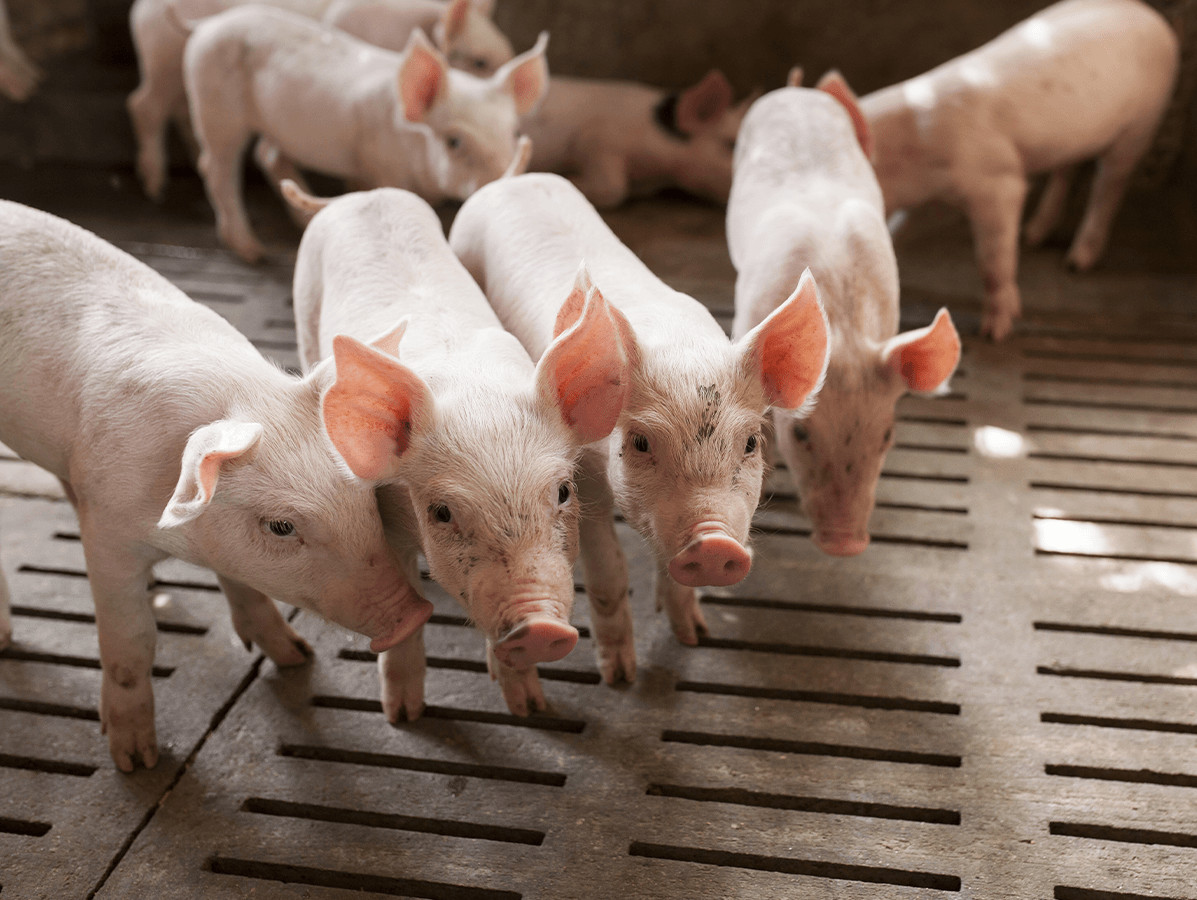
When buying meat, animal welfare is often still a major consideration for consumers, but attention to the environment and climate is growing rapidly. It is precisely in this area that the pig has a strong point, as it is an animal that fits in perfectly with the intended circular agriculture. It has been eating our leftovers and waste for generations. Besides meat, pigs also produce manure. This manure is increasingly used to generate green energy before the minerals are applied to the land as a natural fertiliser for crops and can thus reinforce the concept of circular agriculture. The pig as the ultimate circular animal and source of healthy food. Insiders have known for years that this is where the future of the sector lies.
Forty-seven per cent of the Dutch pig's diet consists of residual and by-products from the food industry. The animal thus contributes to reducing human food waste and converts these products into high-quality animal proteins. Thanks to the use of these residual products and the high efficiency of Dutch pig farmers, the CO2 footprint of the Dutch pig is among the lowest in the world at 3.74 kg CO2 per kg. And we are not yet at the bottom of the barrel. Research by Blonk Consultants and ABN AMRO shows that a further reduction of the footprint by thirty per cent and more is possible.
However, this requires investments that, like those for extra animal welfare, can only be recouped if pig farmers are part of a transparent and demand-driven chain that serves customers who are willing to pay more for this extra quality.
African swine fever in Germany, corona and the deteriorating sales market in China resulted in a dramatic sales market for Dutch piglets and meat pigs in the second half of 2021. It has been a very bad year financially, especially for sow farmers. And the sector is not yet at the end of the tunnel. The Asian market will have to pick up first. This is not a matter of course, because China has meanwhile considerably increased its own production and Europe is struggling with oversupply and with large stocks of pork. In Europe, the pig population will indeed decrease in the coming years, but so will the consumption of pork. The challenge for the sector is therefore to produce appropriate volumes and to focus on interesting markets.
In order to remain relevant in a shrinking market with a great deal of pressure from society, pig farmers must carefully consider their position in the chain, their distinctive capacity and their earnings model. Pig farmers can choose roughly two routes in their strategy. The first route is that of a low cost model and the production of generic products on international markets where prices are relatively volatile. In this case, it is also a form of production that is more likely to encounter social resistance and that requires solid buffers for financial setbacks. The group of farmers who opt for this, like other pig farmers, will be confronted with stricter legislation and regulations in the years ahead. The second route is one in which the entrepreneur produces in a chain or integrated system for an end customer who wants to distinguish himself with a special concept. The name concept indicates that the product in question is different from regular pork. For example, in terms of taste, experience, origin, animal welfare and carbon footprint. Many concepts are distinguished by a quality mark, such as the Beter Leven quality mark of the Dutch Society for the Prevention of Cruelty to Animals, but a product can also distinguish itself without a quality mark. This route often delivers a more stable price with a better chance of a fair distribution of the margin for all parties in the chain, including the pig farmer. In both cases it can help to promote common interests and to agree on specifications and conditions through suppliers' associations or producer organisations.
Read the entire article by ABN-AMRO with even more information about chain cooperation, reducing the carbon footprint and the future prospects of the sector.
Photo: ©Patarapong Saraboon/Shutterstock.com
Source: ABN AMRO